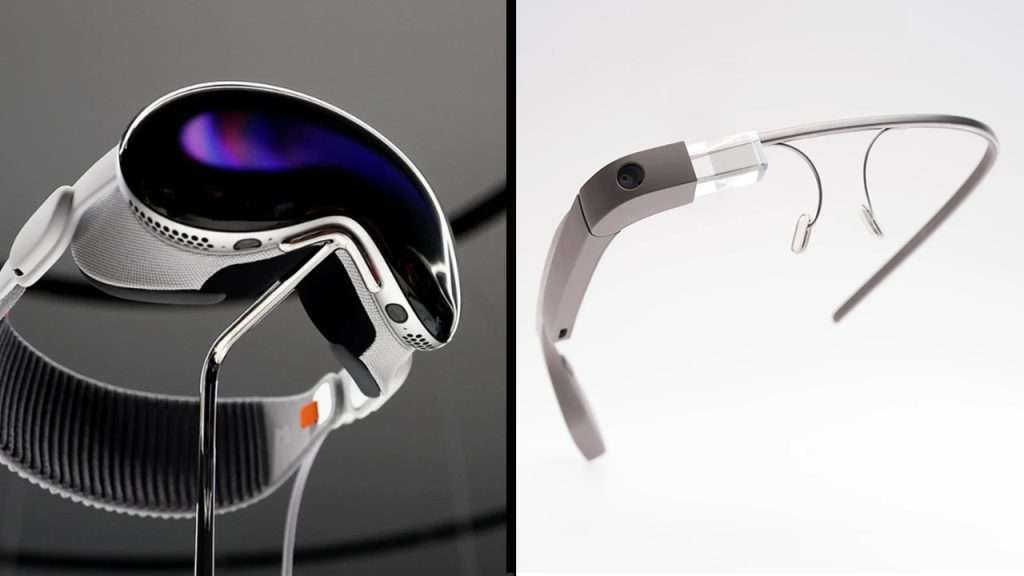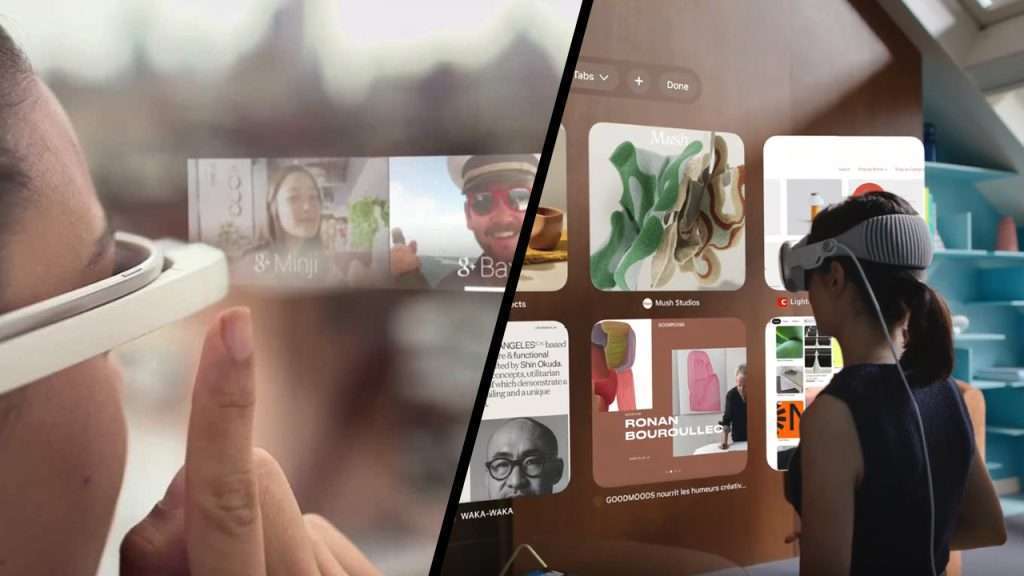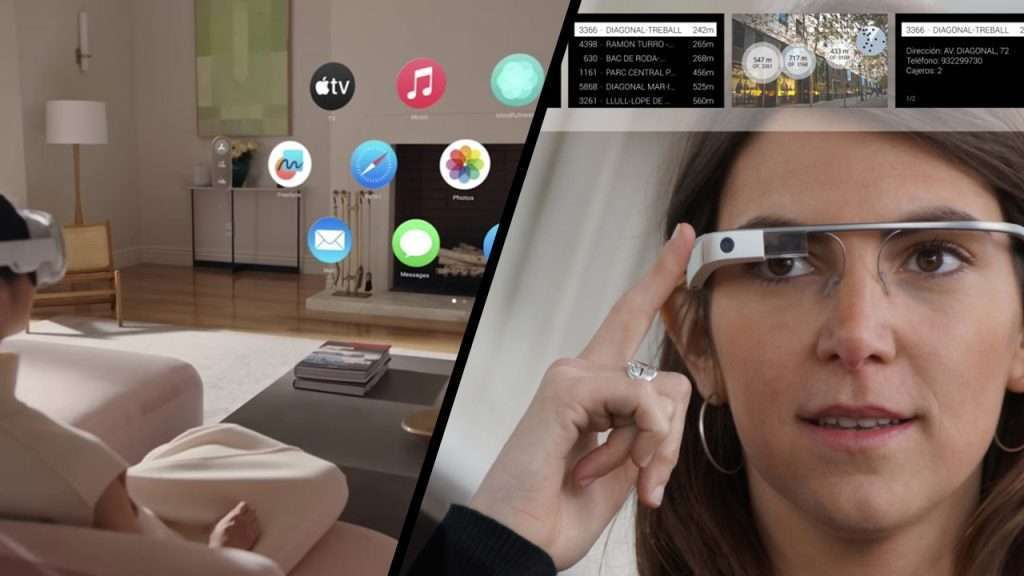
In the ever-evolving world of technology, wearable devices have captured the imagination of both consumers and innovators. One such device that promised to revolutionize the way we interact with the world was Google Glass. However, despite its initial hype, Google Glass failed to gain widespread acceptance and ultimately faded into obscurity. Now, Apple is entering the augmented reality (AR) wearable market with its Vision Pro, aiming to learn from the past and avoid the pitfalls that plagued its predecessor. But can Apple’s Vision Pro overcome the obstacles that doomed Google Glass?
Design and Aesthetic Appeal
In terms of design and aesthetic appeal, Google Glass had a distinct appearance that received mixed reviews from the public. Its design consisted of a prominent frame with a small screen positioned above the user’s eye. This unconventional look led to criticism and made wearers feel self-conscious while wearing the device. Apple, on the other hand, has a strong reputation for its sleek and elegant designs across its product lineup, including the iPhone, iPad, and MacBook. The company places a significant emphasis on aesthetics, understanding that the visual appeal of a device can greatly influence its reception in the market.

With the Vision Pro, Apple has the advantage of leveraging its design expertise to create a more fashionable and appealing product. By incorporating sleek lines, high-quality materials, and a form factor that blends seamlessly with the user’s style, Apple can address the initial barrier faced by Google Glass. The aim is to make the Vision Pro visually appealing, comfortable to wear, and something that users would feel confident sporting in public.
The Vision Pro looks and feels like a premium wearable device, Apple increases the chances of wider acceptance among consumers. People are more likely to embrace a technology if it aligns with their personal style and doesn’t stand out awkwardly. Apple’s expertise in design can play a crucial role in overcoming the clunky appearance criticism that Google Glass faced, potentially making the Vision Pro a more desirable and socially acceptable wearable device.
User Privacy and Social Acceptance
User privacy and social acceptance were significant challenges that Google Glass faced, ultimately leading to its downfall. The device’s built-in camera, which was visible to others, raised concerns about privacy and the potential for intrusive recording. With the Vision Pro, Apple has the opportunity to learn from these privacy issues and prioritize user privacy. Apple has a strong track record of emphasizing privacy and security in its products, and it is likely to apply similar principles to the Vision Pro. By implementing robust privacy settings and controls, Apple can give users confidence that their personal information and interactions are secure.

Additionally, Apple can address the issue of recording transparency by incorporating clear visual cues that indicate when the Vision Pro is in use. This could involve subtle indicators, such as an LED light, to alert both the wearer and those around them that the device is actively capturing or transmitting data. By making these indicators noticeable and easily identifiable, Apple can alleviate concerns about covert recording and enhance trust in the device. To ensure social acceptance, Apple should also focus on educating users about responsible use and privacy etiquette. By providing guidelines and promoting respectful behavior, Apple can discourage any misuse of the device and foster a positive perception among the general public.
By prioritizing user privacy, implementing clear visual cues for recording, and promoting responsible use, Apple can address the privacy concerns that plagued Google Glass. This proactive approach can build trust among users and society at large, mitigating the negative perception associated with wearable devices like Google Glass and enhancing the social acceptance of the Vision Pro.
User Experience and Functionality
User experience and functionality are crucial aspects of any wearable device. Google Glass faced criticism for its limited functionality and its inability to provide users with compelling use cases beyond basic tasks. Apple, known for its focus on user experience and software development, has the potential to overcome these challenges with the Vision Pro. Apple has a vast ecosystem of apps and developers who have experience creating intuitive and engaging user experiences across various devices.

By leveraging this ecosystem, Apple can offer a wide range of applications and functionalities that enhance the user experience of the Vision Pro. Developers can create innovative apps specifically designed for the device, utilizing its unique features and capabilities. This can open up new possibilities for augmented reality experiences, productivity tools, communication applications, and more. Apple’s expertise in software development and its ability to create a seamless and intuitive user interface can greatly enhance the functionality of the Vision Pro. The company has a history of refining its operating systems to provide a smooth and intuitive user experience, which can translate well into the wearable space. Furthermore, Apple’s integration of its existing platforms, such as iOS and macOS, can allow for seamless connectivity and synchronization between devices. This integration can enhance the overall functionality of the Vision Pro and provide a seamless user experience for individuals who already use Apple products.
Expertise in user experience, software development, and its strong developer ecosystem, Apple has the potential to create a robust platform for the Vision Pro. This platform can offer practical and engaging experiences for users, addressing the limitations faced by Google Glass and providing a compelling reason for individuals to adopt the Vision Pro as a valuable wearable device.
Developer Support and Third-Party Integration
Developer support and third-party integration play a crucial role in the success of a wearable device. Google Glass faced challenges in attracting sufficient developer support, which ultimately limited the availability of diverse and compelling applications for the device. Apple’s Vision Pro has the advantage of capitalizing on its existing developer ecosystem, which is already thriving due to its popular platforms like iOS and macOS. Apple has a large and dedicated community of developers who are experienced in creating innovative and high-quality applications for Apple devices.
With the necessary tools, resources, and support, Apple can incentivize them to create applications specifically tailored for the Vision Pro. This can include software development kits (SDKs), documentation, and access to unique features and capabilities of the device. Apple’s established relationship with developers can help ensure a steady stream of innovative and functional applications for the Vision Pro. Apple’s ecosystem integration can enhance third-party integration with the Vision Pro. Developers can leverage existing Apple technologies and frameworks to seamlessly integrate their apps with other Apple devices and services. This integration can provide a cohesive user experience across multiple devices and enable powerful functionalities that extend beyond the wearable itself.

Apple can ensure a wide range of innovative applications that enhance the functionality of the Vision Pro. This can provide users with diverse and compelling experiences, from productivity and communication tools to entertainment and augmented reality application. By leveraging its existing developer ecosystem, providing necessary tools and support, and enabling seamless third-party integration, Apple can ensure a robust and thriving ecosystem of applications for the Vision Pro. This developer support and third-party integration are essential ingredients for the success of any wearable device, and Apple has the potential to excel in this regard.
In summary, Apple’s Vision Pro has the potential to learn from the past and overcome the obstacles that doomed Google Glass. By prioritizing design and aesthetic appeal, addressing privacy concerns, focusing on user experience and functionality, and fostering developer support, Apple can position itself for success in the augmented reality wearable market. However, it remains to be seen whether Apple can strike the right balance between innovation and user acceptance. Only time will tell if the Vision Pro will revolutionize the way we perceive and interact with the world, or if it will face similar challenges as its predecessor.

Leave a Reply